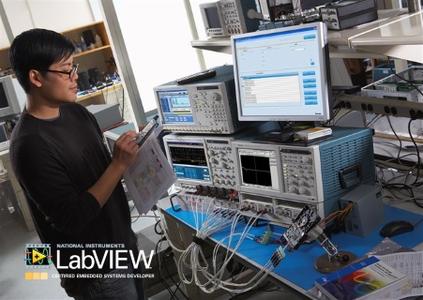 NI TestStand 2017 Semiconductor Module | 692.5 mb
NI TestStand 2017 Semiconductor Module | 692.5 mbNational Instruments (NI) is pleased to announce the availability of TestStand 2017 Semiconductor Module. TSM extends the TestStand environment to help you develop, debug, deploy, and maintain semiconductor test systems.
What’s New in the NI TestStand 2017 Semiconductor Module – Release July 2018:
Refer to the What’s New in the NI TestStand 2017 Semiconductor Module topic in the NI TestStand Semiconductor Module Help for information about new features and changes introduced since NI TestStand 2016 SP1 Semiconductor Module. Select Help»TestStand Help and navigate to the NI TestStand Semiconductor Module book in the table of contents of the TestStand Help to launch the NI TestStand Semiconductor Module Help. Refer to the TestStand Version 2017 Release Notes and the TestStand 2017 Readme for additional information about TestStand.
About TestStand Semiconductor Module. The NI TestStand Semiconductor Module extends the TestStand environment to help you develop and maintain semiconductor systems, including wafer-level and final package test applications, with pin/channel mapping, binning, handler/prober drivers, limit importing/exporting, and multisite programming.
NI TestStand Semiconductor Module adds the following features and functionality to TestStand for developing semiconductor test system software:
– Multisite pin map file, TSM Code Module APIs, and Semiconductor Multi Test step type for developing a semiconductor test program that runs on multiple test system hardware configurations with a variable number of test sites at a high parallel test efficiency.
– Support for binning devices under test (DUTs) based on test results.
– Support for exporting and importing test limits with text files.
– Data types, configurable callbacks, and dialog boxes for specifying test program settings, test station settings, and test lot information.
– Plug-in architecture for handler and prober communication using TSM handler/prober drivers.
– Result processing plug-ins for generating report and data log files for the test lot, such as Standard Test Data Format (STDF) logs.
– Plug-in architecture for performing part average testing.
– Customizable operator interface for executing test programs, enabling or disabling test sites, displaying statistics, and configuring test lot information and test station settings.
– A set of step types with template code to perform common operations, such as setting up and closing instruments, powering up a DUT, or executing common tests.
– Customizable site and pin aware instrument panel VIs for debugging instruments during test program execution at a breakpoint.
About NI LabView. LabVIEW (Laboratory Virtual Instrument Engineering Workbench) is a graphical programming language that uses icons instead of lines of text to create applications. In contrast to text-based programming languages that use instructions to determine the order of program execution, LabVIEW uses dataflow programming. In data flow programming, the flow of data through the nodes on the block diagram determines the execution order of the VIs and functions. VIs, or virtual instruments, are LabVIEW programs that imitate physical instruments.
In LabVIEW, you build a user interface by using a set of tools and objects. The user interface is known as the front panel. After you build the front panel, you add code using graphical representations of functions to control the front panel objects. You add this graphical code, also known as G code or block diagram code, to the block diagram. The block diagram somewhat resembles a flowchart. The block diagram, front panel, and graphical representations of code compose a VI.
About National Instruments. Since 1976, National Instruments has equipped engineers and scientists with tools that accelerate productivity, innovation and discovery. NI’s graphical system design approach to engineering provides an integrated software and hardware platform that speeds the development of any system needing measurement and control. The company’s long-term vision and focus on improving society through its technology supports the success of its customers, employees, suppliers and shareholders.
Product: NI TestStand Semiconductor Module
Version: 2017
Supported Architectures: 32bit / 64bit
Website Home Page : http://www.ni.com
Language: english
System Requirements: PC
Supported Operating Systems: Windows 7even SP1/ 8.1 Update 1 / 10 (version 1709) / Server 2012 R2 or Server 2008 R2 SP1
Software Prerequisites: LabVIEW 2018 and NI TestStand 2017. (Optional) NI-DAQmx 16.1.0f2 or later .NET API
Size: 692.5 mb
Password/解压密码-0daydown
Download rapidgator
https://rg.to/file/6bca988eeb0228ca495836eb38711421/TSt17SemMo_x64.rar.html
https://rg.to/file/e8d3689a959335c92655bfecbd079793/TSt17SemMo_x86.rar.html
Download nitroflare
http://nitroflare.com/view/4E96AF78A6A2B0A/TSt17SemMo_x64.rar
http://nitroflare.com/view/5040CAA6C77341F/TSt17SemMo_x86.rar
Download 百度云
你是VIP 1个月(1 month)赞助会员,